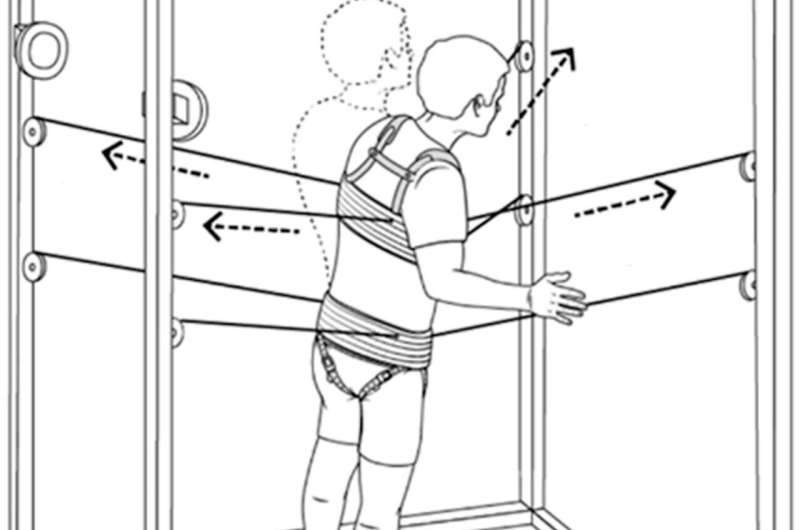This article has been reviewed according to Science X's editorial process and policies. Editors have highlighted the following attributes while ensuring the content's credibility:
fact-checked
proofread
Scientists investigate effects of robotic postural stand training combined with spinal cord epidural stimulation

Kessler Foundation researchers have published a new clinical study investigating the effects of robotic postural stand training combined with spinal cord epidural stimulation (Stand-scES) on trunk control in individuals with high-level spinal cord injury (SCI).
The article, "Effects of Robotic Postural Stand Training with Epidural Stimulation on Sitting Postural Control in Individuals with Spinal Cord Injury: A Pilot Study" was published in the Journal of Clinical Medicine on July 24, 2024.
Improvement of trunk postural control, and particularly trunk stability, is recognized as one of the key rehabilitative goals as well as one of the top priorities indicated by individuals living with SCI. As per the study results, the robotic postural stand training protocol with Stand-scES led to relevant trunk control improvements in the upright standing position. However, it did not promote statistically significant changes or large effects in any of the sitting trunk control outcomes considered for analysis in a population of high-level motor complete SCI individuals.
According to lead author Enrico Rejc, Ph.D., consulting researcher in the Tim and Caroline Reynolds Center for Spinal Stimulation at the Foundation, "Our study indicates that while robotic postural stand training with epidural stimulation significantly enhances trunk control during standing tasks, this improvement does not automatically extend to sitting. This posture-specific response underscores the complexity of motor recovery in individuals with high-level spinal cord injuries."
Future studies should investigate, prospectively, whether, and to what extent, posture specificity plays a role in determining activity-based training-induced neural plasticity and motor recovery, asserted Dr. Rejc.
"The lack of significant changes in sitting trunk control following this standing-focused training suggests that rehabilitation strategies should be tailored to target specific postures," he said. "Future research should explore combined training approaches to address both sitting and standing postural challenges in this population. This approach may provide a positive balance between specificity and variability of the sensory-motor inputs for motor recovery."
The study included a methodological approach, where six participants with cervical or high-thoracic motor who completed SCI underwent approximately 80 sessions of robotic postural stand training with Stand-scES. The training included dynamic and static standing tasks with trunk perturbations, but did not involve specific sitting exercises.
More information: Enrico Rejc et al, Effects of Robotic Postural Stand Training with Epidural Stimulation on Sitting Postural Control in Individuals with Spinal Cord Injury: A Pilot Study, Journal of Clinical Medicine (2024). DOI: 10.3390/jcm13154309



















